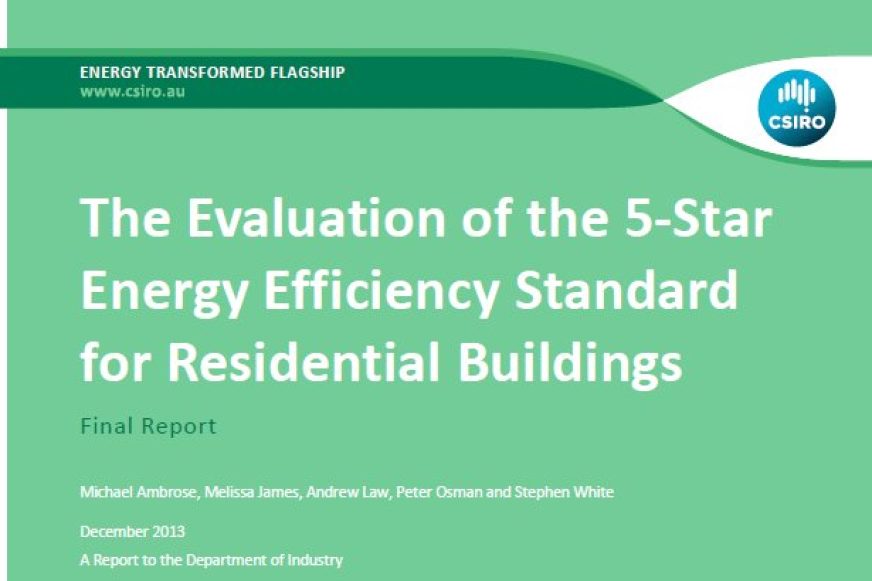New Report – Evaluation of 5 Star Energy Efficiency Standard for Residential Buildings.
Not many have noticed that the CSIRO issued the above report to the Department of Industry in December 2013. CSIRO was commissioned to assess if the new standard was actually achieving its goals. The study covered two main points :
- If the 5 star standards have actually reduced heating and cooling energy use of homes compared with those built to the earlier lower standard (3.5 to 4 stars), and
- Determine the actual benefits and costs of meeting the 5 star standard.
Although most of Australia is now building to 6 Star levels, this study provides an interesting snapshot of whether the star rating system is actually doing what was intended. That is does it reduce heating and cooling costs and reduce greenhouse gas emissions? The study reviewed 414 houses across three climate zones over a winter and summer period, specifically in Melbourne, Adelaide and Brisbane.
Details on the study, methodologies used, and other relevant information is in the complete report. If you’d like to see the complete report, click here to download it.
The key findings are extracted and summarized from the report were:
- The 5 star standard significantly reduced the energy needed to maintain a house temperatures in winter in the homes studied. As well as saving energy, higher rated houses on average held a temperature of around 1 degree C higher than lower rated houses during winter.
- The average cooling energy use in summer was greater in the higher rated houses in Brisbane and Melbourne. However it’s not clear if that is due to the 5 star standard, the make up of the house occupancy or other behavioral factors.
- Greenhouse Gas Emissions were reduced in winter in higher rated houses in all cities.
- Heating costs were reduced and cooling costs increased in higher rated houses. The net annual impact was that Brisbane costs were greater in higher rated houses, whereas Adelaide and Melbourne costs were lower for the higher rated houses. Reductions in Adelaide were small but in Melbourne the reduction was significant (37% per year).
- The higher rated houses cost at least $5,000 less to build in Adelaide and Melbourne for those elements of the building related to energy efficiency, than lower rated houses, and up to $7,000 less to build in Brisbane.
Conclusion: That the 5 star standard has produced significant savings in heating energy use in the sample. However we need to improve our understanding of summer time house cooling energy efficiency. Thermally efficient houses are cheaper to build!
Information for this blog has been obtained from the CSIRO report The Evaluation of the 5-Star Energy Efficiency Standard for Residential Buildings, dated December 2013. You can download it by clicking here.
We’re sure you’ll find it very interesting reading and we look forward to further studies in this area.








